
Hvar: Croatia's Sunny Gem
Discover Hvar, Croatia's sun-kissed island paradise, known for its historic charm, stunning beaches, and vibrant cultural scene. Perfect for travelers seeking beauty and adventure.
Hvar, often called the 'Queen of the Dalmatian Islands,' is a haven for tourists seeking both relaxation and adventure. This picturesque island is renowned for its stunning natural landscapes, crystal-clear waters, and rich history. As one of the sunniest spots in Europe, Hvar promises a delightful climate, making it an ideal destination for year-round travel. The town of Hvar itself is a blend of old-world charm and modern luxury. Wander through its narrow streets, where ancient stone houses and Gothic palaces stand side by side with trendy bars and upscale boutiques. The town square, anchored by the impressive St. Stephen's Cathedral, is a perfect spot to soak in the local atmosphere. Don't miss the opportunity to climb up to the Spanish Fortress, which offers panoramic views of the town and the sparkling Adriatic Sea. Beyond the town, Hvar Island boasts an array of beaches, each more beautiful than the last. From secluded coves to bustling beach clubs, there's something for every type of traveler. The island is also renowned for its lavender fields, olive groves, and vineyards, providing a sensory delight for visitors. A trip to Hvar wouldn't be complete without exploring its underwater world through snorkeling or diving, where vibrant marine life awaits. Hvar is not just about natural beauty; it also has a lively cultural scene. From summer music festivals to local markets, the island offers a variety of activities that cater to all interests. The local cuisine, featuring fresh seafood and Mediterranean flavors, is another highlight that will leave you craving for more. Whether you're a history buff, a beach lover, or a foodie, Hvar has something to offer for everyone.
Local tips in Hvar
- Visit during the shoulder seasons (April-June or September-October) for fewer crowds and pleasant weather.
- Book accommodation well in advance, especially if visiting during the peak summer months.
- Rent a scooter or bike to explore the island at your own pace and discover hidden gems.
- Take a day trip to the nearby Pakleni Islands for stunning beaches and crystal-clear waters.
- Try local dishes like 'gregada' (fish stew) and enjoy fresh seafood at the waterfront restaurants.
- Don't forget to bring cash, as some smaller shops and restaurants may not accept credit cards.
Hvar: Croatia's Sunny Gem
Hvar, often called the 'Queen of the Dalmatian Islands,' is a haven for tourists seeking both relaxation and adventure. This picturesque island is renowned for its stunning natural landscapes, crystal-clear waters, and rich history. As one of the sunniest spots in Europe, Hvar promises a delightful climate, making it an ideal destination for year-round travel. The town of Hvar itself is a blend of old-world charm and modern luxury. Wander through its narrow streets, where ancient stone houses and Gothic palaces stand side by side with trendy bars and upscale boutiques. The town square, anchored by the impressive St. Stephen's Cathedral, is a perfect spot to soak in the local atmosphere. Don't miss the opportunity to climb up to the Spanish Fortress, which offers panoramic views of the town and the sparkling Adriatic Sea. Beyond the town, Hvar Island boasts an array of beaches, each more beautiful than the last. From secluded coves to bustling beach clubs, there's something for every type of traveler. The island is also renowned for its lavender fields, olive groves, and vineyards, providing a sensory delight for visitors. A trip to Hvar wouldn't be complete without exploring its underwater world through snorkeling or diving, where vibrant marine life awaits. Hvar is not just about natural beauty; it also has a lively cultural scene. From summer music festivals to local markets, the island offers a variety of activities that cater to all interests. The local cuisine, featuring fresh seafood and Mediterranean flavors, is another highlight that will leave you craving for more. Whether you're a history buff, a beach lover, or a foodie, Hvar has something to offer for everyone.
When is the best time to go to Hvar?
Iconic landmarks you can’t miss
Fortica Fortress
Experience the historical charm and stunning views at Fortica Fortress, a must-visit destination in Hvar, Croatia.

Fortress of Petar Hektorović
Discover the historical treasures of the Fortress of Petar Hektorović, a stunning castle showcasing the rich culture of Stari Grad on Hvar Island.

Hula Hula Hvar - Beach Bar & Restaurant
Experience the vibrant beach culture at Hula Hula Hvar, a must-visit beach bar offering stunning views, delicious drinks, and lively entertainment on Croatia's beautiful island.

Viewpoint to Marjan
Discover the breathtaking vistas of Split from the Marjan Viewpoint, an essential stop for every traveler seeking stunning natural beauty and historical charm.

Plaža Dubovica
Experience the tranquility and natural beauty of Plaža Dubovica, a hidden gem on Lesina Island perfect for sunbathing, swimming, and relaxation.

Tvrđava Minčeta
Discover the historical grandeur of Tvrđava Minčeta, a stunning fortress in Dubrovnik, offering breathtaking views and rich cultural heritage.

Adriana - Hvar Spa Hotel
Experience luxury and relaxation at the Adriana Hvar Spa Hotel, where stunning views and exceptional service create the perfect getaway in Hvar.

Fort Bokar
Discover the historical charm and stunning vistas of Fort Bokar, a must-visit fortress in Dubrovnik, Croatia.
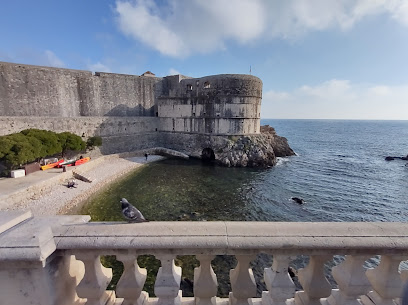
Franciscan Monastery
Experience the serene beauty and rich history of the Franciscan Monastery in Hvar, a must-visit tourist attraction on the Adriatic coast.

Bonj Beach
Discover the beauty of Bonj Beach on Hvar Island - crystal-clear waters, vibrant atmosphere, and stunning views await you.

Plaža Malo Zaraće
Experience the tranquil beauty of Plaža Malo Zaraće, a stunning public beach on Hvar Island, perfect for relaxation and adventure.

Sveta Nedjelja - Bay Lučišća
Experience the serene beauty of Sveta Nedjelja - Bay Lučišća, a stunning public bath destination on Hvar Island, perfect for relaxation and swimming.

St. Stephen's Cathedral
Explore Hvar's rich heritage at St. Stephen's Cathedral, a stunning blend of Gothic and Renaissance architecture in the heart of the island.

Vinogradishće
Explore the enchanting Vinogradishće, Hvar's vibrant port and gateway to stunning Adriatic adventures and local culture.
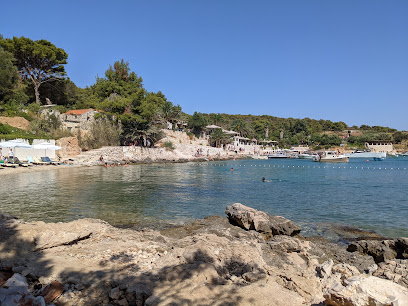
Hotel Podstine
Discover the tranquil charm of Hotel Podstine on Hvar Island, where luxury meets breathtaking views and local culture awaits.

Unmissable attractions to see
Diocletian's Palace
Discover the timeless beauty and rich history of Diocletian's Palace, a UNESCO World Heritage Site in the heart of Split, Croatia.

Golden Horn Beach
Experience the breathtaking beauty of Golden Horn Beach, a stunning natural landmark in Bol, Croatia, perfect for relaxation and water sports.

Split Riva
Experience the vibrant atmosphere of Split Riva, a scenic promenade that blends history, culture, and stunning Adriatic views in Croatia's coastal gem.

Biokovo Nature Park - Skywalk
Discover the breathtaking beauty of Biokovo Nature Park, featuring the thrilling Skywalk and stunning views of the Adriatic coast.
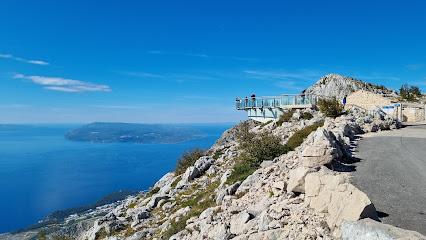
Klis Fortress
Discover the historic Klis Fortress, a stunning cultural landmark in Croatia, offering breathtaking views and rich historical significance.
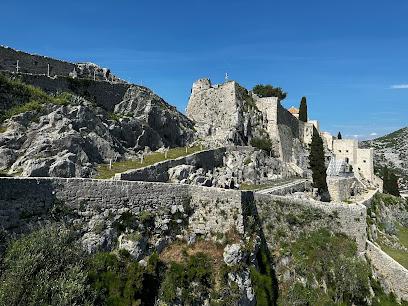
Poljud Stadium
Discover the architectural beauty and vibrant atmosphere of Poljud Stadium, home to the legendary Hajduk Split football club in scenic Split, Croatia.

Saint Domnius Cathedral
Explore the historic Saint Domnius Cathedral, a remarkable blend of ancient architecture and spiritual significance in the heart of Split, Croatia.
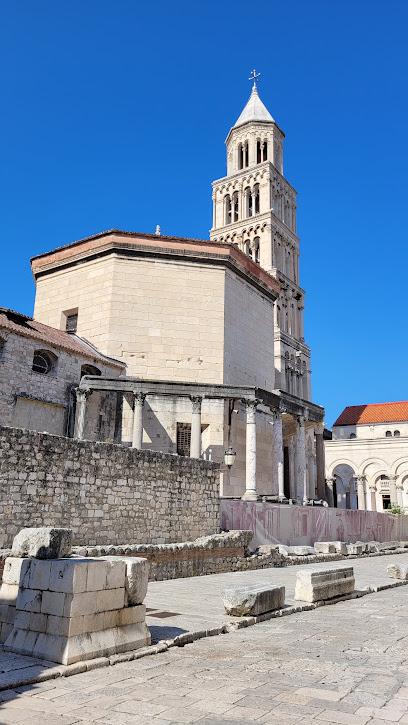
Fortica Fortress
Discover the historical Fortica Fortress in Hvar, a stunning site with breathtaking views and rich cultural heritage, perfect for every traveler.

St. Peter's Forest Park
Discover the natural splendor of St. Peter's Forest Park in Makarska, where breathtaking views and lush trails await outdoor enthusiasts and nature lovers.

Mirabela Fortress (Peovica)
Discover the breathtaking views and rich history of Mirabela Fortress, a must-visit landmark in Omiš, Croatia.

Skywalk Biokovo
Discover the breathtaking views and thrilling experiences at Skywalk Biokovo, an architectural marvel perched above the stunning Adriatic Sea.

Out to Sea - Split Boat Party
Experience the vibrant Out to Sea Boat Party in Split, where stunning views and unforgettable memories await on the beautiful Adriatic Sea.

Kasjuni Beach
Discover the enchanting Kasjuni Beach in Split, where stunning landscapes meet serene waters for the ultimate relaxation experience.

Fortress of Petar Hektorović
Explore the Fortress of Petar Hektorović, a captivating historical landmark in Stari Grad, showcasing rich culture, stunning architecture, and breathtaking views.

Green Market
Discover the vibrant Green Market in Split, where local flavors and Mediterranean culture come together for an unforgettable shopping experience.

Essential places to dine
Dalmatino
Discover the essence of Mediterranean cuisine at Dalmatino - where exquisite flavors meet exceptional service in beautiful Hvar.

Fig Hvar
Experience exquisite Mediterranean cuisine at Fig Hvar - where local flavors meet stunning views in the heart of Croatia.
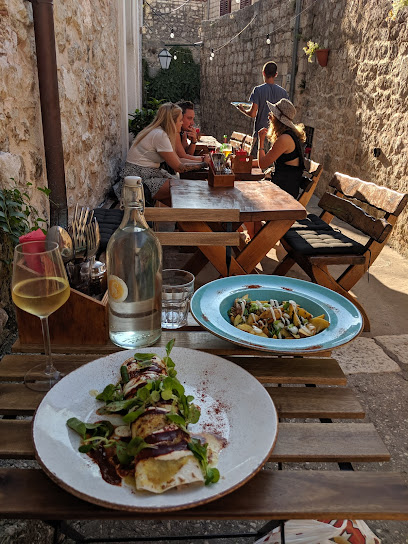
Restaurant Mizarola
Experience authentic Croatian cuisine at Restaurant Mizarola in Hvar - where fresh ingredients meet exceptional flavors.
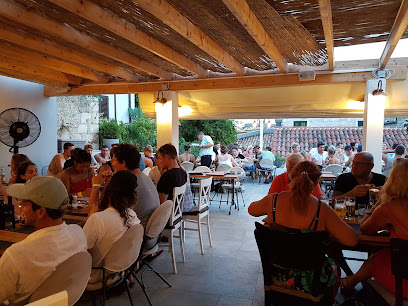
Dva Ribara
Experience authentic Croatian flavors at Dva Ribara, Hvar's family-friendly restaurant with stunning sea views and delectable seafood dishes.

Mediterraneo Dine & Wine
Discover exquisite dining at Mediterraneo Dine & Wine in Hvar - where fresh ingredients meet stunning sea views.

La Bocca - Pizza, pasta, grill restaurant Hvar
Discover Hvar's culinary gem at La Bocca, where exquisite pizza and pasta meet exceptional service in a vibrant atmosphere.

Pošteni Restaurant - Hvar
Experience exquisite seafood and Italian cuisine at Pošteni Restaurant in Hvar - where every meal is a celebration of local flavors.

Lola Bar
Discover Hvar's vibrant nightlife at Lola Bar, where exquisite cocktails meet lively atmosphere in an unforgettable setting.

Grande Luna
Experience exquisite dining at Grande Luna in Hvar – where local flavors meet modern culinary artistry amidst stunning Mediterranean views.

Passarola Restaurant
Experience exquisite Mediterranean dining at Passarola Restaurant in Hvar – where tradition meets taste in a charming setting.

Nook
Experience unique fusion cuisine at Nook in Stari Grad – where every dish tells a story of global flavors.

Giaxa
Experience authentic Croatian cuisine at Giaxa in Hvar - where tradition meets modern culinary artistry.

Konoba Humac
Discover authentic Croatian flavors in a charming setting at Konoba Humac - where every dish tells a story.

Macondo
Discover exquisite seafood dishes at Macondo in Hvar, where fresh ingredients meet stunning Adriatic views.

Kod Kapetana
Discover exquisite seafood and stunning views at Kod Kapetana in Hvar - a must-visit dining experience on Croatia's beautiful island.
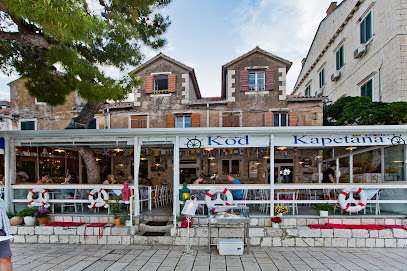
Markets, malls and hidden boutiques
Tommy Hipermarket T-196
Discover the ultimate shopping destination on Hvar Island at Tommy Hipermarket T-196, where convenience meets quality and affordability.

Konzum
Discover the ultimate shopping experience at Konzum in Hvar, where local flavors meet convenience and variety.

BackLane craft bar - Craft cocktails and beer
Experience Hvar's vibrant cocktail culture at BackLane Craft Bar, where innovative mixology meets a cozy atmosphere.

Tommy Supermarket
Explore the vibrant flavors of Croatia at Tommy Supermarket in Hvar, your go-to spot for fresh groceries and local specialties.

Coffee Snob - Specialty Coffee & Pastry
Discover the essence of Hvar's café culture at Coffee Snob, where specialty coffee and delightful pastries unite in a charming setting.

Studenac Market
Explore the vibrant Studenac Market in Hvar, where local produce and Croatian delicacies await to enrich your travel experience.

Antoana
Discover a diverse shopping experience at Antoana, the essential department store in the heart of Hvar, offering everything from electronics to local specialties.

Tržnica Hvar
Discover the flavors and crafts of Hvar at Tržnica Hvar, a lively market filled with local produce and unique souvenirs in a stunning Mediterranean setting.

Isola | artisan store Hvar
Explore Isola, Hvar's artisan store, for unique gifts and souvenirs that celebrate Croatian craftsmanship in a charming setting.

Meraki Concept Store
Explore the Meraki Concept Store in Hvar for unique clothing and accessories that capture the island's vibrant spirit and style.

Taman t-shirts
Discover unique and stylish t-shirts at Taman t-shirts, the perfect place to find fashionable souvenirs in vibrant Hvar.

DM - Drogerie Markt
Explore DM - Drogerie Markt in Stari Grad for a wide selection of health and beauty products, all at competitive prices.

Gamulin chocolates
Discover the sweet artistry of Gamulin Chocolates in Hvar, where handcrafted delights await every chocolate lover.

VILEBREQUIN
Explore the vibrant collections at VILEBREQUIN, Hvar's premier swimwear store for stylish beach essentials and luxury apparel.
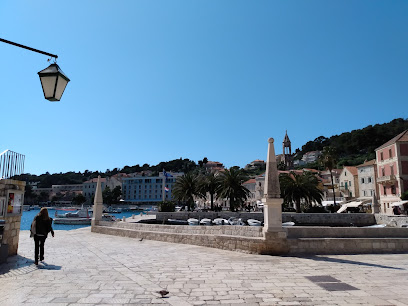
Hommoca Concept Store
Explore the stylish Hommoca Concept Store in Hvar for unique men's fashion and accessories that blend contemporary style with local charm.

Essential bars & hidden hideouts
Hula Hula Hvar - Beach Bar & Restaurant
Discover the vibrant beach bar experience at Hula Hula Hvar, where exquisite cuisine meets stunning views and lively entertainment.

Central Park Club, Hvar
Discover the heart of Hvar's nightlife at Central Park Club, the premier live music bar offering unforgettable performances and vibrant atmosphere.

BB Club
Experience the vibrant atmosphere of BB Club, a top cafe on Hvar's Riva, offering great views, delicious drinks, and local charm.

Lola Bar
Experience the vibrant atmosphere and exquisite flavors at Lola Bar, Hvar’s premier restaurant and cocktail spot for culinary enthusiasts.

Gurme Tapas & Wine
Discover the essence of Hvar at Gurme Tapas & Wine, where exquisite tapas and fine wines create a memorable dining experience.
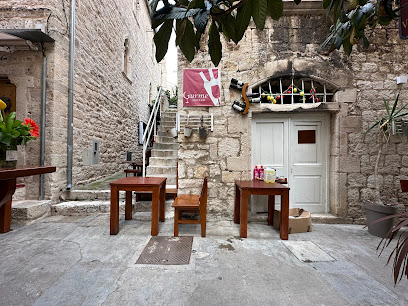
Beach Club Hvar
Experience the ultimate beach getaway at Beach Club Hvar, where sun, sea, and exquisite dining meet vibrant nightlife in a stunning coastal setting.

Kiva Bar
Experience the vibrant nightlife of Hvar at Kiva Bar, where great music and delicious drinks create unforgettable memories.

Aloha Bar Hvar
Discover the lively Aloha Bar in Hvar - a charming bar offering refreshing drinks, stunning views, and a vibrant nightlife experience.

Nautica Bar
Discover Nautica Bar in Hvar: Where every cocktail is a taste of paradise with stunning views of the Adriatic Sea.

Seven Hvar
Discover Seven Hvar: A premier cocktail bar offering a vibrant atmosphere, creative drinks, and stunning seaside views in the heart of Hvar.

Caffe bar Sidro
Experience the vibrant atmosphere at Caffe Bar Sidro in Hvar, where delicious drinks and live music create unforgettable memories.

Icy Bar
Discover the delightful Icy Bar in Hvar, where scrumptious ice creams and healthy meals meet a vibrant Mediterranean atmosphere.

Teraca Bar
Experience the vibrant atmosphere of Teraca Bar, where expertly crafted cocktails and stunning views of Hvar come together for an unforgettable evening.

Calma Beach Bar
Discover the tranquil charm of Calma Beach Bar in Hvar, where stunning views and refreshing drinks create an unforgettable seaside experience.

Loco Bar
Experience the lively atmosphere and refreshing drinks at Loco Bar, Hvar's premier social hub in the heart of the island.

Travel experiences inspired by this city
Explore more travel diariesLocal Phrases
-
- HelloBok
[Bohk] - GoodbyeDoviđenja
[Doh-vee-jen-ya] - YesDa
[Dah] - NoNe
[Neh] - Please/You're welcomeMolim
[Moh-leem] - Thank youHvala
[Hvah-lah] - Excuse me/SorryOprosti
[Oh-pros-tee] - How are you?Kako si?
[Kah-koh see?] - Fine. And you?Dobro. A ti?
[Doh-bro. Ah tee?] - Do you speak English?Govorite li engleski?
[Goh-voh-ree-teh lee ehn-gles-kee?] - I don't understandNe razumijem
[Neh rah-zoo-mee-yem]
- HelloBok
-
- I'd like to see the menu, pleaseMolim vas, mogu li vidjeti jelovnik?
[Moh-leem vahs, moh-goo lee vee-dyeh-tee yeh-lohv-neek?] - I don't eat meatNe jedem meso
[Neh yeh-dem meh-soh] - Cheers!Živjeli!
[Zhee-vyeh-lee] - I would like to pay, pleaseŽelim platiti, molim
[Zheh-leem plah-tee-tee, moh-leem]
- I'd like to see the menu, pleaseMolim vas, mogu li vidjeti jelovnik?
-
- Help!Upomoć!
[Oo-poh-mohtch] - Go away!Idi odavde!
[Ee-dee oh-dahv-deh] - Call the Police!Pozovite policiju!
[Poh-zoh-vee-teh poh-lee-tsee-yoo] - Call a doctor!Pozovite doktora!
[Poh-zoh-vee-teh dohk-toh-rah] - I'm lostIzgubio/la sam se
[Eez-goo-byoh/lah sahm seh] - I'm illBolestan/na sam
[Boh-leh-stahn/nah sahm]
- Help!Upomoć!
-
- I'd like to buy...Želim kupiti...
[Zheh-leem koo-pee-tee] - I'm just lookingSamo gledam
[Sah-moh gleh-dahm] - How much is it?Koliko košta?
[Koh-lee-koh koh-shta?] - That's too expensiveTo je pre-skupe
[Toh yeh preh-skoo-peh] - Can you lower the price?Možete li spustiti cijenu?
[Moh-zheh-teh lee spoos-tee-tee tsee-yeh-noo?]
- I'd like to buy...Želim kupiti...
-
- What time is it?Koliko je sati?
[Koh-lee-koh yeh sah-tee?] - It's one o'clockJedan je sat
[Yeh-dahn yeh saht] - Half past (10)Pola (deset)
[Poh-lah (deh-seht)] - MorningJutro
[Yoo-troh] - AfternoonPopodne
[Poh-pohd-neh] - EveningVečer
[Veh-chehr] - YesterdayJučer
[Yoo-cher] - TodayDanas
[Dah-nahs] - TomorrowSutra
[Soo-trah] - 1Jedan
[Yeh-dahn] - 2Dva
[Dvah] - 3Tri
[Tree] - 4Četiri
[Cheh-tee-ree] - 5Pet
[Peh-t] - 6Šest
[Shehst] - 7Sedam
[Seh-dahm] - 8Osam
[Oh-sahm] - 9Devet
[Deh-veht] - 10Deset
[Deh-seht]
- What time is it?Koliko je sati?
-
- Where's a/the...?Gdje je...?
[Gdyeh yeh...?] - What's the address?Koja je adresa?
[Koh-yah yeh ah-deh-sah?] - Can you show me (on the map)?Možete li mi pokazati (na karti)?
[Moh-zheh-teh lee mee poh-kah-zah-tee (nah kahr-tee)?] - When's the next (bus)?Kada je sljedeći (autobus)?
[Kah-dah yeh slyeh-deh-chee (ow-toh-boos)?] - A ticket (to ....)Jednu kartu (do ...)
[Yehd-noo kahr-too (doh ...)]
- Where's a/the...?Gdje je...?
History of Hvar
-
Hvar's history dates back to ancient times when it was first inhabited by the Illyrians. The island was known as Pharos by the Greeks, who established a colony there in 384 BC. This marked the beginning of Hvar's long and storied history as a key location in the Adriatic Sea.
-
Following the Greek period, Hvar fell under Roman control. The Romans brought their advanced infrastructure, including roads, aqueducts, and fortifications, which left a lasting impact on the island's development. Many Roman artifacts and ruins can still be found on the island today.
-
In the medieval period, Hvar became an important center of trade and culture. In 1278, the island came under the control of the Republic of Venice. Venetian rule brought prosperity and architectural advancements, many of which are still visible in the town's structures, such as the Hvar Cathedral and the Arsenal.
-
During the 16th century, Hvar faced threats from the Ottoman Empire. To protect the island, the Venetians built the impressive Fortica, or Spanjola Fortress, which overlooks the town of Hvar. This fortress played a crucial role in defending the island from Ottoman attacks and remains a significant historical landmark.
-
The early 19th century brought the Napoleonic Wars, during which Hvar was briefly under French control. After the fall of Napoleon, the island became part of the Austrian Empire. This period saw further development and modernization, with the construction of new public buildings and infrastructure.
-
Hvar, like much of Croatia, was affected by the turmoil of the 20th century. During World War I, it was part of the Austro-Hungarian Empire, and following the war, it became part of the Kingdom of Serbs, Croats, and Slovenes, later known as Yugoslavia. World War II brought further challenges, with the island experiencing occupation and resistance movements.
-
In the latter half of the 20th century, Hvar became part of the Socialist Federal Republic of Yugoslavia until Croatia gained independence in 1991. Today, Hvar is a popular tourist destination known for its rich history, stunning architecture, and vibrant culture. The island continues to attract visitors from around the world, eager to explore its historical sites and natural beauty.
Hvar Essentials
-
Hvar is easily accessible from the mainland of Croatia. The nearest international airport is Split Airport (SPU), located about 25 kilometers from the city of Split. From Split, you can take a ferry to Hvar Town. Jadrolinija and Krilo are the two main ferry operators that provide regular services. The journey by ferry takes approximately 1 to 2 hours, depending on the type of service. Alternatively, you can reach Hvar by taking a catamaran from Split, which is faster but may have limited space for luggage.
-
Hvar is a relatively small island, and many attractions are within walking distance. For longer distances, local buses operate between major towns like Hvar Town, Stari Grad, and Jelsa. Taxis are available but can be expensive, so it's advisable to agree on a fare before starting your journey. Renting a scooter or a bicycle is a popular and convenient way to explore the island at your own pace. Car rentals are also available, but keep in mind that parking can be challenging in peak tourist season.
-
The official currency in Croatia is the Croatian Kuna (HRK). Credit and debit cards are widely accepted in hotels, restaurants, and shops in Hvar, but it is advisable to carry some cash for smaller establishments and remote areas. ATMs are available in Hvar Town and other major settlements, but fees may apply for international cards. Consider exchanging some currency before you arrive or at a bank in Split.
-
Hvar is generally a safe destination for tourists. However, like any popular travel spot, it's wise to take standard precautions. Avoid carrying large sums of cash and keep an eye on your belongings in crowded places. There are no specific high-crime areas targeting tourists, but be vigilant in busy areas like Hvar Town and during popular events. Pickpocketing can occur, especially in crowded places and during the night.
-
In case of an emergency, dial 112 for immediate assistance. This number connects you to the police, fire department, and medical services. Hvar Town has a medical center and several pharmacies for minor health issues. It's advisable to have travel insurance that covers medical emergencies. For more serious medical needs, you may need to be transported to a hospital in Split.
-
Fashion: Do dress casually and comfortably, especially if you plan on exploring the island on foot or by bicycle. However, avoid wearing swimwear or very revealing clothing away from the beach. Religion: Do respect local customs and traditions. When visiting churches, dress modestly and avoid loud behavior. Public Transport: Do be respectful and patient when using public transport. Buses can get crowded, so be prepared for delays. Greetings: Do greet people with a friendly 'dobar dan' (good day) and a handshake. Eating & Drinking: Do try local dishes such as 'gregada' (fish stew) and 'pašticada' (braised beef). Don't refuse food or drink offerings, as it is considered impolite.
-
To experience Hvar 'like a local,' visit the local markets where you can buy fresh produce, olive oil, and lavender products. Engage with locals, who are often friendly and willing to share stories about the island's history and culture. Don't miss the opportunity to explore the Pakleni Islands, a short boat ride from Hvar Town, for pristine beaches and clear waters. For a unique experience, hike up to the Spanish Fortress for a panoramic view of Hvar Town and the surrounding islands.
Trending Landmark in Hvar
-
Fortica Fortress
-
Fortress of Petar Hektorović
-
Hula Hula Hvar - Beach Bar & Restaurant
-
Viewpoint to Marjan
-
Plaža Dubovica
-
Tvrđava Minčeta
-
Adriana - Hvar Spa Hotel
-
Fort Bokar
-
Franciscan Monastery
-
Bonj Beach
-
Plaža Malo Zaraće
-
Sveta Nedjelja - Bay Lučišća
-
St. Stephen's Cathedral
-
Vinogradishće
-
Hotel Podstine
Nearby Cities to Hvar
-
Things To Do in Makarska
-
Things To Do in Split
-
Things To Do in Trogir
-
Things To Do in Mostar
-
Things To Do in Dubrovnik
-
Things To Do in Jajce
-
Things To Do in Trebinje
-
Things To Do in Zenica
-
Things To Do in Zadar
-
Things To Do in Sarajevo
-
Things To Do in Herceg Novi
-
Things To Do in Perast
-
Things To Do in Banja Luka
-
Things To Do in Tivat
-
Things To Do in Kotor














